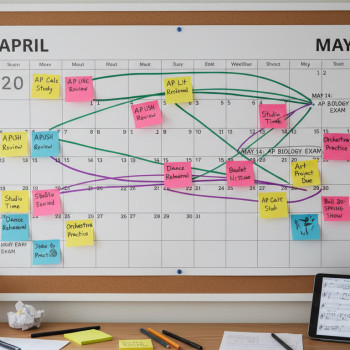Why Students and Families Are Talking About 3+2 and 4+1 Programs
There’s a quiet revolution happening in higher education planning: cooperative degree programs like 3+2 and 4+1 pathways. These programs let students combine strengths of two institutions—or two degree levels—so they graduate with more specialized credentials in less time than a traditional route. For students taking Advanced Placement (AP) classes and aiming for top colleges, these pathways can be transformative: AP can provide the academic foundation, demonstrated rigor, and sometimes even direct college credit that make a 3+2 or 4+1 plan feasible and attractive.

What Are 3+2 and 4+1 Cooperative Programs?
At their core, these cooperative programs are accelerated or integrated degree pathways. They come in several flavors, but the most common are:
- 3+2 Programs: Typically three years at one (often liberal arts) college followed by two years at a partner institution (often specializing in engineering, architecture, or another professional field). The student earns two degrees—one from each institution—at the end of year five.
- 4+1 Programs: Usually four years to earn a bachelor’s degree plus one additional year for a master’s or professional graduate degree. Some variations are structured as guaranteed admission to the graduate program if certain criteria are met.
These programs are intentionally designed: they bundle complementary strengths of institutions, streamline admissions into graduate study, and can reduce the overall cost or time to an advanced credential. For AP students, there’s an opportunity to arrive at college already positioned to take advantage of these options.
Real-World Benefits at a Glance
- Time efficiency—earn two degrees in about five years instead of six or more.
- Potential cost savings—fewer semesters in expensive graduate programs.
- Competitive edge—early specialization can make students more attractive to employers and PhD programs.
- Flexibility—students can blend broad undergraduate learning with focused professional preparation.
How AP Courses and Scores Fit Into Cooperative Pathways
AP classes do more than pad a transcript: they show colleges you can handle rigorous, college-level work. For cooperative programs that want a blend of breadth and depth, AP can play several roles:
- Credit Acceleration: Many colleges grant credit or advanced placement for high AP exam scores, allowing you to skip prerequisites or start higher-level classes sooner.
- Demonstrated Readiness: Success in multiple AP subjects signals consistent academic preparedness—valuable for both undergraduate admission and internal transfer or graduate admission steps of cooperative programs.
- Curriculum Head-Start: If you place out of introductory courses, you can pursue minors, research, internships, or accelerated tracks that satisfy 3+2 or 4+1 admissions criteria.
Examples of Practical AP Uses
- AP Calculus and Physics can let an aspiring engineer start higher-level engineering coursework earlier during the 3-year phase of a 3+2 program.
- AP English and History free up humanities requirements, giving room to double major or pursue research, which strengthens later graduate-level admissions.
- AP Chemistry and Biology provide prerequisites that can shorten the timeline for a 4+1 accelerated master’s in a STEM field.
Mapping AP Into a 3+2 or 4+1 Timeline: A Sample Plan
Below is a sample timeline showing how AP credits and careful freshman-year planning can feed into cooperative program requirements. Exact details vary by institution; treat this as an illustrative roadmap.
| Year | Student Focus | Role of AP/Advanced Placement |
|---|---|---|
| Senior Year (High School) | Strategic AP exams, finalize college list, meet with counselors. | Take APs that align with intended major (Calculus, Physics, Chemistry, English). Use scores for credit/placement. |
| College Year 1 | Placement decisions, meet faculty advisors, plan major prerequisites. | Confirm AP credit with registrar; use freed slots to take advanced or elective courses to strengthen profile for 3+2/4+1 consideration. |
| College Year 2 | Engage in research, internships, and build strong grades in major coursework. | Take upper-level courses earlier thanks to AP credits; target GPA thresholds for guaranteed progression into partner programs. |
| College Year 3 | Apply or confirm acceptance into partner institution for the professional portion (for 3+2), or meet 4+1 requirements. | AP-enabled advanced coursework demonstrates readiness for accelerated transition. |
| College Years 4–5 | Complete professional degree requirements at partner grad-level institution. | Earlier start on major-specific courses shortens total time to degree. |
Why This Timeline Works
AP credit gives tactical flexibility: you can start advanced classes sooner, take more electives that support a crossover into a secondary field, or maintain a GPA buffer that’s often required for guaranteed admissions into the partner program.
Admissions Realities: What Colleges Look For
Each cooperative program has its own admissions expectations, but common themes include:
- Strong academic record in quantitative and major-specific coursework.
- A clear, coherent plan that explains why two degrees or an accelerated master’s make sense for the student’s goals.
- Evidence of initiative: research, internships, leadership, and sustained interest in the field.
- Eligibility benchmarks such as minimum GPA, prerequisite coursework, and sometimes interviews or portfolio reviews.
AP helps satisfy several of those points: it builds a transcript of rigorous coursework, creates space to pursue research, and provides test-based evidence of ability in key areas.
Strategic AP Course Selection: What to Prioritize
Choosing APs should be intentional. Think of AP classes as investments; you want the biggest academic ROI for your future pathway.
- For prospective engineers (common 3+2 applicants): AP Calculus AB/BC, AP Physics 1/2/C, AP Chemistry.
- For students eyeing a technical 4+1 master’s: AP Statistics plus Calculus shows quantitative readiness.
- For cross-disciplinary pathways (e.g., business + engineering): AP Economics and AP Calculus provide useful grounding.
- Humanities-heavy students benefit from AP English and History—helpful for programs that value strong communication and critical thinking.
Balance Depth and Breadth
Don’t overload on APs just to collect scores. Depth in a few relevant subjects is usually more persuasive than scattered APs across many areas. Colleges notice a focused, coherent academic profile.
Study and Test Strategies for AP Success
High AP exam scores can open doors, but getting there requires a plan. Here are practical steps that work for high-achieving students:
- Start early with concept review: AP exams reward conceptual understanding over rote memorization. Use the course framework to guide priorities.
- Practice deliberately with past exams: timed, exam-style practice reduces test-day surprises and builds endurance.
- Create an AP calendar: stack study blocks weekly rather than cramming. Short, focused sessions beat marathon study nights.
- Use AP as a springboard: aim to convert weaker AP class periods into office hours with teachers, study groups, or project-based work that strengthens the college application narrative.
Many students benefit from personalized help. Services like Sparkl’s personalized tutoring can offer 1-on-1 guidance, tailored study plans, expert tutors, and AI-driven insights to target weak spots—especially useful when juggling multiple AP subjects and planning for cooperative program requirements.
Credit Policies and Pitfalls: Things to Confirm Early
AP credit policies vary widely. Before using AP scores to plan a cooperative pathway, confirm the following with each prospective college:
- Which AP exam scores are accepted and at what thresholds (e.g., 4 or 5 required for credit)?
- How many credits each AP score equates to and whether those credits apply to major requirements, electives, or only general education.
- Deadline and process to submit official AP scores and petition for credit.
- Whether AP credit affects the timeline for program eligibility—some partner programs require certain courses to be taken at the home institution regardless of AP credit.
A common pitfall: students assume AP credit will free them from certain requirements, only to discover those particular credits don’t count toward major prerequisites at the partner institution. Ask early and get answers in writing from academic advisors.
Comparing 3+2 vs 4+1: Which Is Right for You?
Both pathways speed progress, but they serve different goals. Use this quick comparison to think through fit:
| Feature | 3+2 Program | 4+1 Program |
|---|---|---|
| Typical Outcome | Bachelor’s + Bachelor’s (often liberal arts + professional) | Bachelor’s + Master’s (one continuous plan) |
| Best For | Students seeking interdisciplinary breadth plus specialized professional training | Students who want an accelerated master’s in a single field |
| Timing | 5 years total (3 + 2) | 5 years total (4 + 1) |
| AP Advantage | Helps satisfy early prerequisites and gives time for research/portfolio work | Can reduce undergraduate course load to allow graduate-level start sooner |
Which Should You Pick?
Ask yourself: Do you want a broad liberal arts foundation with technical specialization (3+2), or do you want to move more directly into a graduate-level specialization within your field (4+1)? Your AP choices and performance should align with that direction.
Building a Competitive Application for Cooperative Programs
Beyond AP scores, admissions committees look for evidence you’ll thrive in an accelerated, high-pressure environment. Build this portfolio during undergrad:
- Strong grades in discipline-specific coursework. A high cumulative GPA is often a strict criterion for guaranteed admission into partner programs.
- Undergraduate research, capstone projects, internships, or industry experience—these show intellectual maturity and practical readiness.
- Meaningful faculty relationships—letters of recommendation that speak to your preparedness for advanced study go a long way.
- A clearly articulated statement of purpose describing why the cooperative pathway fits your career goals.
AP coursework helps with the first two bullets: it creates room in your schedule for research and internships, and a record of high AP achievement strengthens the narrative of academic readiness.
Practical Checklist: Senior Year Through Junior College Year
Use this checklist to stay on track. It condenses the actions that matter into a manageable plan:
- Senior Year (HS): Prioritize AP exams that align with intended major. Research partner institutions and their AP credit policies.
- Application Time: Explain your long-term academic plan in essays. Emphasize readiness for an accelerated pathway.
- First-Year College: Submit AP scores, meet advisors, and verify how credits are applied. Draft a potential 3+2/4+1 roadmap with your academic advisor.
- Sophomore Year: Begin discussions with prospective partner programs. Pursue internships and research opportunities.
- Junior Year: Finalize applications or internal admissions processes for the partner institution. Confirm any outstanding prerequisite completion.
Common Questions Parents and Students Ask
Will AP Scores Automatically Give Me Credit?
No. AP credit policies are college-specific. Some accept AP scores for major prerequisites, others only for general electives, and some require departmental review. Always confirm with the registrar and the department.
What If I Don’t Place Out of Courses—Can I Still Do a 3+2 or 4+1?
Yes. AP is advantageous but not always essential. Strong undergraduate performance, faculty endorsements, and relevant research or internship experience can compensate. AP just makes certain transitions smoother.
Is It Risky to Commit to a Cooperative Program?
There are trade-offs. A cooperative pathway often means a more prescriptive course load and time compressed around major requirements. The reward is faster advancement and a potentially stronger professional profile. Keep options open—many programs allow flexibility to switch to a traditional track if priorities change.
How to Use Support Services Effectively
Quality guidance can amplify AP outcomes and cooperative pathway success. Consider these forms of support:
- Academic advisors and departmental mentors at your home college—vital for official credit evaluations and roadmap approvals.
- Targeted tutoring for challenging AP subjects. Personalized tutoring—such as Sparkl’s tailored 1-on-1 sessions and AI-driven study plans—can help raise scores and strengthen readiness without burning out students.
- College counselors who understand cooperative program structures and the specific expectations of partner institutions.
Final Thoughts: Design a Journey, Not Just a Transcript
AP courses and cooperative degree programs are tools—powerful ones—but they work best when used intentionally. The goal isn’t simply to collect credits or to speed through degrees; it’s to design an education that aligns with your passions, prepares you for the career or graduate study you want, and still leaves room for intellectual curiosity.
Start with a clear sense of why you’re choosing a 3+2 or 4+1 path. Let AP be the scaffolding that gives you options—advanced coursework in year one of college, space for meaningful research, or a competitive GPA that secures guaranteed admission into the next phase. And when you need focused help to reach those AP scores or to balance coursework and extracurriculars, thoughtful, personalized support can make a measurable difference.

Actionable Next Steps (Two-Week Starter Plan)
Want to get moving now? Here’s a practical two-week plan to jumpstart progress:
- Day 1–3: Gather AP score policy documents for target colleges and get contact info for the registrar and department advisors.
- Day 4–7: Meet with your high school counselor or college advisor to map how existing AP scores may apply.
- Day 8–11: Identify two AP subjects to prioritize for improved scores; start a focused practice schedule with past exam problems.
- Day 12–14: Explore tutoring or mentoring options. If personalized support fits your needs, arrange an introductory session to build a tailored study plan.
Closing: It’s a Marathon, Strategically Run
Cooperative programs like 3+2 and 4+1 reward deliberate planning. AP can give you both the momentum and the credibility to enter these pathways with confidence. Keep sight of the big picture—your intellectual growth and long-term goals—and use AP and available support to create meaningful options, not just short-term shortcuts. With a clear plan, consistent effort, and the right support, you can transform AP exams and cooperative pathways into a powerful springboard toward advanced study and the career you want.
Ready to build a tailored plan that aligns AP preparation with cooperative program goals? Consider personalized tutoring and a study roadmap—1-on-1 coaching and AI-informed insights can sharpen your approach so you make the most of every AP opportunity.
Quick Checklist (One-Page)
- Confirm AP credit policies for each target college.
- Create a 4–5 year academic roadmap aligning AP credits with program prerequisites.
- Pursue research/internships early to strengthen candidacy for partner programs.
- Keep a GPA buffer to satisfy guaranteed-admission thresholds.
- Use focused tutoring if you need targeted score improvements.
Good luck—and remember: thoughtful planning beats last-minute scrambling. Design your path, gather the right support, and let AP work for you.




















No Comments
Leave a comment Cancel